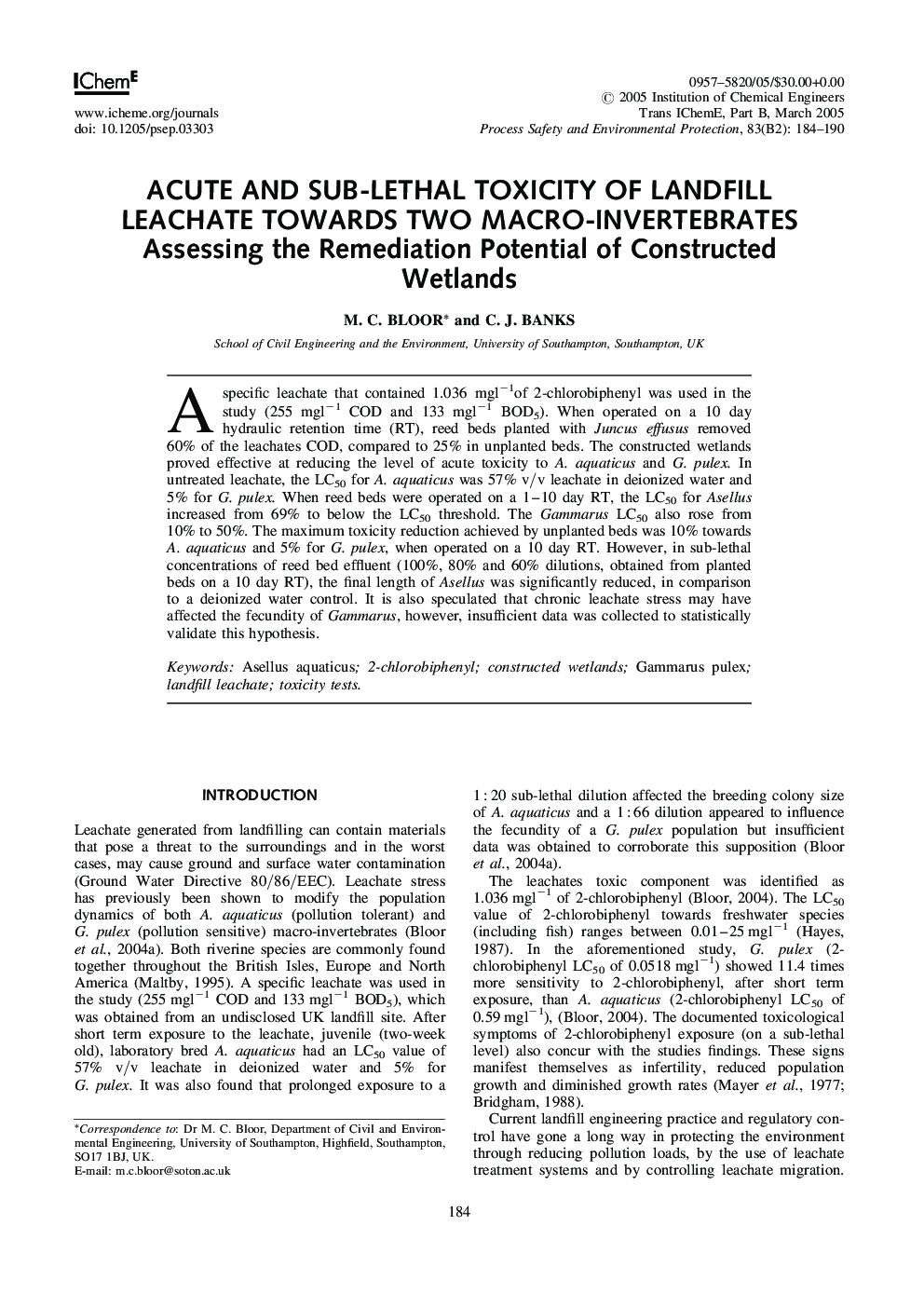| Article ID | Journal | Published Year | Pages | File Type |
|---|---|---|---|---|
| 10374047 | Process Safety and Environmental Protection | 2005 | 7 Pages |
Abstract
Aspecific leachate that contained 1.036 mgl-1 of 2-chlorobiphenyl was used in the study (255 mgl-1 COD and 133 mgl-1 BOD5). When operated on a 10 day hydraulic retention time (RT), reed beds planted with Juncus effusus removed 60% of the leachates COD, compared to 25% in unplanted beds. The constructed wetlands proved effective at reducing the level of acute toxicity to A. aquaticus and G. pulex. In untreated leachate, the LC50 for A. aquaticus was 57% v/v leachate in deionized water and 5% for G. pulex. When reed beds were operated on a 1-10 day RT, the LC50 for Asellus increased from 69% to below the LC50 threshold. The Gammarus LC50 also rose from 10% to 50%. The maximum toxicity reduction achieved by unplanted beds was 10% towards A. aquaticus and 5% for G. pulex, when operated on a 10 day RT. However, in sub-lethal concentrations of reed bed effluent (100%, 80% and 60% dilutions, obtained from planted beds on a 10 day RT), the final length of Asellus was significantly reduced, in comparison to a deionized water control. It is also speculated that chronic leachate stress may have affected the fecundity of Gammarus, however, insufficient data was collected to statistically validate this hypothesis.
Keywords
Related Topics
Physical Sciences and Engineering
Chemical Engineering
Chemical Health and Safety
Authors
M.C. Bloor, C.J. Banks,
